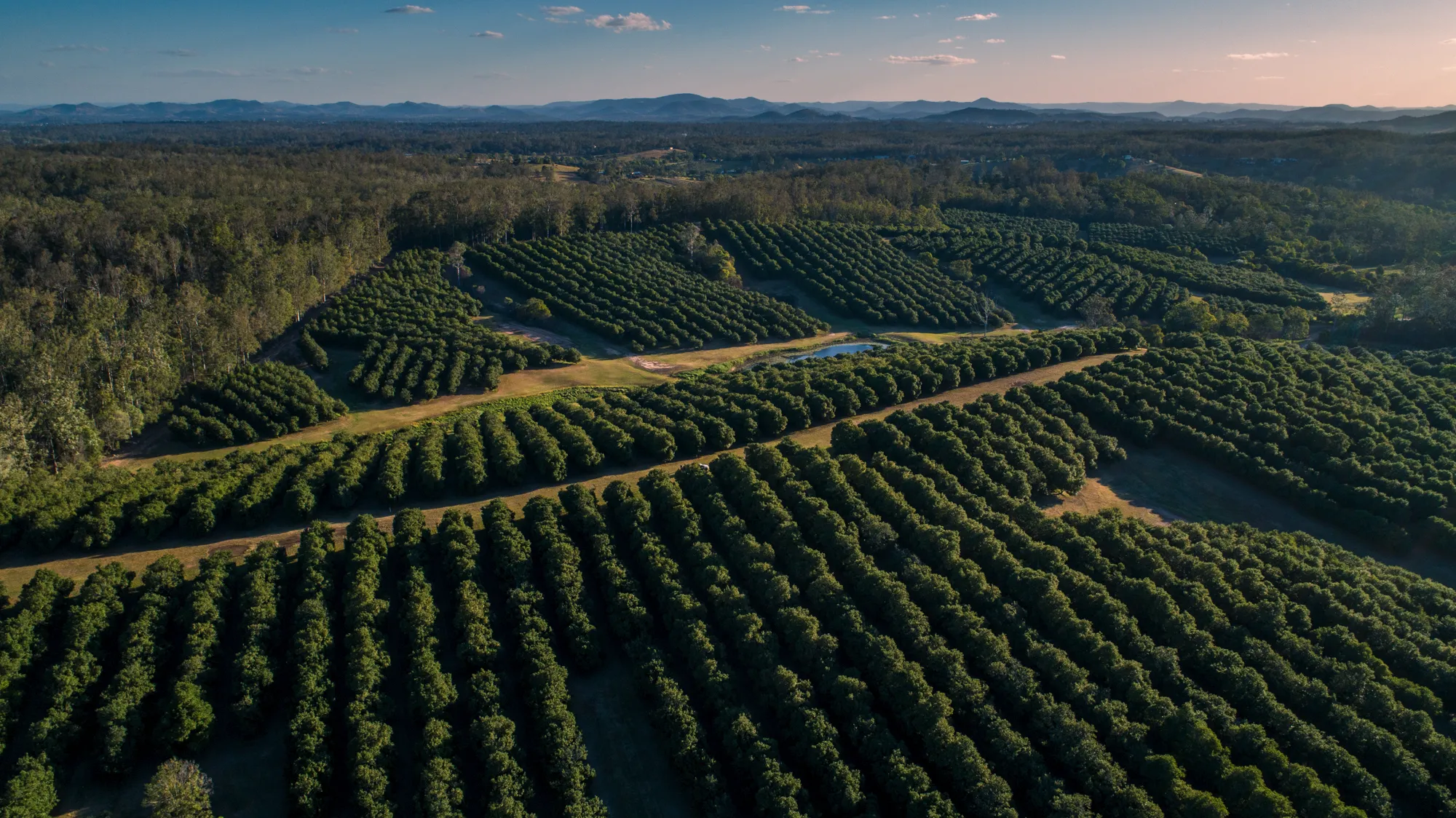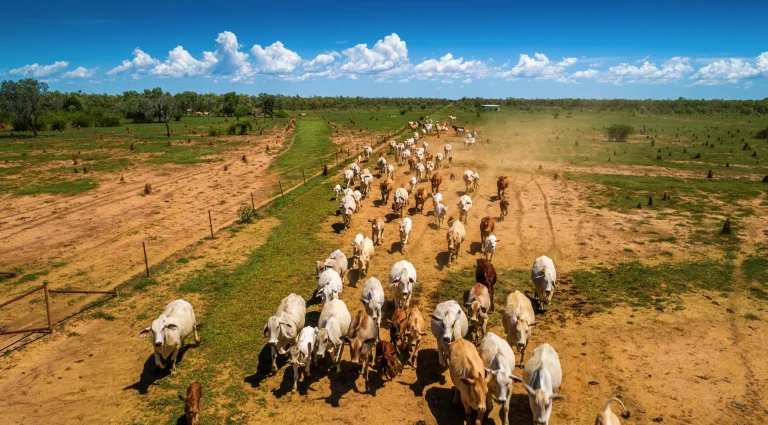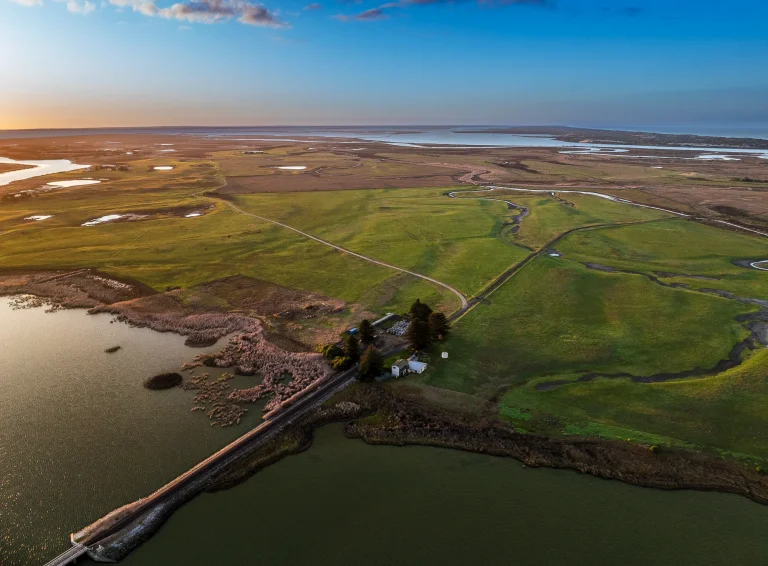Analysis of Rural Land Price Trends in the Agricultural Market: Comprehensive Market Assessment
Rural land prices demonstrate complex dynamics driven by agricultural fundamentals, investment demand, and economic conditions that create distinct market patterns across different agricultural sectors and geographic regions. Conducting comprehensive analysis of rural land price trends in the agricultural market becomes essential for investors, farmers, lenders, and policy makers seeking to understand value drivers, investment opportunities, and strategic positioning within evolving agricultural property markets. At Agribusiness Horizons, we provide specialized market intelligence and price trend analysis that examines rural land value movements across diverse agricultural enterprises, regional markets, and investment categories that shape sector development and investment decisions. This analysis explores the fundamental factors influencing rural land prices and their implications for agricultural investment strategies and market positioning.
The agricultural land market exhibits unique characteristics influenced by production capacity, commodity prices, water availability, and investment capital flows that create distinct pricing patterns compared to other property sectors while demonstrating long-term appreciation trends and cyclical variations that require specialized market analysis.
Market Fundamentals and Price Drivers
Agricultural land prices reflect underlying production capacity and income-generating potential through soil quality, climate conditions, and infrastructure development that determine operational efficiency and competitive positioning within agricultural markets.
Production capacity encompasses soil fertility, topography, and growing conditions that influence yield potential and operational suitability while creating fundamental value differences between agricultural properties and regional markets that affect pricing patterns and investment attractiveness.
Water availability and irrigation infrastructure significantly influence land values through enhanced production reliability and crop diversification opportunities while creating premium pricing for irrigated properties and water-secure agricultural enterprises.
Infrastructure access including transportation networks, processing facilities, and service provision affects operational efficiency and market access while influencing land values through cost advantages and competitive positioning within agricultural supply chains.
Commodity price cycles create cyclical patterns in agricultural land values through their impact on farm profitability and investment attractiveness while demonstrating correlation between agricultural commodity performance and land price appreciation.
Population growth and food security considerations drive long-term demand for productive agricultural land while creating fundamental support for land values through increasing food production requirements and dietary improvements.
Investment capital availability encompasses both agricultural and non-agricultural investment sources while influencing market liquidity and pricing levels through investor demand and financing accessibility that affects transaction activity and price formation.
Regional Market Variations and Characteristics
Different Australian agricultural regions demonstrate distinct land price trends reflecting local advantages, production systems, and market positioning that create diverse investment opportunities and pricing patterns across the agricultural landscape.
High-rainfall coastal regions typically command premium land values through reliable production conditions and intensive agricultural opportunities while demonstrating strong price appreciation and consistent investment demand from both agricultural and lifestyle buyers.
Irrigation regions show price premiums reflecting water security and production reliability while demonstrating correlation between water allocation values and land price movements that create additional complexity in valuation and investment analysis.
Grain belt regions exhibit price variations based on soil quality, rainfall reliability, and operational scale while demonstrating cyclical patterns related to commodity price movements and seasonal conditions that affect investment timing and strategy development.
Pastoral regions encompass extensive grazing operations with lower per-hectare values but substantial total property values while demonstrating different price drivers including carrying capacity, water points, and operational infrastructure that influence investment approaches.
Peri-urban agricultural areas face development pressure and alternative use potential while demonstrating higher land values and different market dynamics compared to purely agricultural regions that create unique investment considerations and pricing complexity.
Emerging agricultural regions including developing horticultural areas show dynamic pricing patterns reflecting infrastructure development and market establishment while creating opportunities for strategic investment and value appreciation.
Investment Demand and Capital Flow Analysis
Investment capital from diverse sources increasingly targets agricultural land through recognition of sector stability and inflation protection characteristics while creating additional demand pressure and pricing support beyond traditional agricultural buyers.
Institutional investment encompasses superannuation funds, investment trusts, and international capital targeting agricultural assets while providing market liquidity and pricing support that influences overall market dynamics and investment attractiveness.
Family farming operations represent traditional buyers seeking expansion and succession planning while demonstrating price sensitivity and operational focus that influences market segments and transaction patterns within agricultural land markets.
Corporate agricultural investment includes integrated operations and strategic acquisitions while providing capital access and professional management capabilities that influence market pricing and competitive dynamics within agricultural property markets.
International investment particularly from Asian markets demonstrates growing interest in Australian agricultural assets while creating additional demand and pricing pressure that influences market dynamics and investment attractiveness.
Passive investment strategies encompass lease arrangements and investment partnerships while enabling broader participation in agricultural land investment and providing alternative ownership structures that influence market accessibility and pricing patterns.
Development and conversion investment targets agricultural land with alternative use potential while creating premium pricing and market complexity that influences agricultural land values and investment strategies.
Technology Impact and Productivity Enhancement
Technological advancement increasingly influences rural land values through enhanced productivity potential and operational efficiency that justify premium pricing for properties with advanced infrastructure and technology adoption capabilities.
Precision agriculture systems enable optimized resource utilization and enhanced productivity while creating value premiums for properties with suitable infrastructure and technology compatibility that support modern agricultural operations.
Automation capabilities reduce labor requirements and improve operational consistency while creating competitive advantages and value enhancement for properties with appropriate scale and infrastructure that support technology adoption.
Data management and connectivity infrastructure become increasingly important for modern agricultural operations while influencing land values through operational efficiency and decision-support capabilities that enhance competitive positioning.
Water management technology encompasses efficiency improvements and conservation systems while creating value premiums for properties with advanced irrigation infrastructure and water optimization capabilities.
Processing and value-added infrastructure development affects regional land values through enhanced market access and premium positioning opportunities while creating competitive advantages and revenue enhancement potential.
Research and development proximity encompasses agricultural innovation centers and technology transfer opportunities while influencing land values through access to expertise and advanced agricultural practices.
| Market Segment | Price Characteristics | Key Drivers | Investment Considerations |
|---|---|---|---|
| Irrigated Cropping | Premium pricing, water-dependent | Water security, crop diversification | High returns, infrastructure requirements |
| Dryland Farming | Moderate pricing, weather-dependent | Soil quality, rainfall reliability | Stable returns, climate exposure |
| Intensive Horticulture | High pricing, specialized infrastructure | Market access, technology adoption | Specialist knowledge, capital intensive |
| Pastoral Grazing | Low per-hectare, large scale | Carrying capacity, water points | Scale advantages, extensive management |
Agricultural land market segments demonstrate distinct pricing characteristics and investment considerations that require specialized analysis and strategic positioning for optimal investment outcomes.
Agribusiness Horizons’ Land Market Intelligence
At Agribusiness Horizons, our comprehensive approach to analysis of rural land price trends in the agricultural market combines deep agricultural knowledge with sophisticated market intelligence capabilities that provide clients with accurate assessments and strategic guidance for investment and strategic decision-making. We understand that rural land markets require specialized analysis that accounts for agricultural fundamentals and regional variations.
Our market intelligence services monitor rural land price movements while providing trend analysis and forecasting that support strategic planning and investment decision-making across diverse agricultural property markets and regional opportunities.
Our agricultural expertise encompasses production systems, regional characteristics, and market dynamics while providing specialized knowledge of agricultural land values and pricing factors that influence investment success and strategic positioning.
Our analytical capabilities encompass comparative market analysis, trend identification, and forecasting while supporting strategic planning and investment decision-making across diverse rural land investment opportunities and market conditions.
Our professional network includes agricultural valuers, market participants, and regional experts who provide specialized insights and market intelligence that enhance our analytical capabilities and strategic advisory services.
Economic Factors and Market Cycles
Macroeconomic conditions significantly influence rural land price trends through their impact on agricultural profitability, investment demand, and financing availability that create cyclical patterns and long-term trends within agricultural property markets.
Interest rate environments affect agricultural land values through financing costs and investment returns while influencing buyer capacity and competitive dynamics that determine pricing levels and transaction activity within agricultural property markets.
Currency exchange rates impact export-oriented agricultural regions through commodity competitiveness and international investment attractiveness while influencing land values and investment demand from both domestic and international sources.
Inflation trends affect agricultural land as an inflation hedge while influencing investment demand and pricing levels that support long-term value appreciation and portfolio positioning within investment strategies.
Government policy including agricultural support programs, taxation provisions, and regulatory frameworks affects land values through operational profitability and investment attractiveness while creating policy-driven market influences.
Global economic conditions encompass international trade, commodity demand, and investment capital flows while influencing Australian agricultural land markets through export opportunities and international investment demand.
Financial market conditions including equity markets and alternative investments affect agricultural land demand through portfolio allocation decisions and relative investment attractiveness that influence pricing levels and market activity.
Commodity Market Correlation
Agricultural land prices demonstrate varying degrees of correlation with commodity markets through their impact on farm profitability and investment attractiveness while creating cyclical patterns and strategic timing opportunities for investment decisions.
Grain price cycles influence cropping land values through profitability expectations and investment attractiveness while creating correlation between commodity performance and land price movements that affect investment timing and strategy.
Livestock price trends affect pastoral land values through carrying capacity returns and operational profitability while influencing investment demand and pricing levels within grazing property markets.
Horticultural product prices impact intensive agricultural land values through premium market access and value-added opportunities while creating pricing premiums and investment attractiveness for suitable properties.
Export market developments including trade agreements and international demand affect land values in export-oriented regions while influencing investment attractiveness and competitive positioning within global markets.
Processing industry developments encompass facility investment and capacity expansion while affecting regional land values through enhanced market access and competitive positioning opportunities.
Supply chain infrastructure including transportation and logistics development affects land values through operational efficiency and market access while influencing competitive positioning and investment attractiveness.
Environmental and Regulatory Influences
Environmental regulations and sustainability requirements increasingly influence rural land values through operational constraints and enhancement opportunities that affect long-term investment attractiveness and competitive positioning.
Water allocation policies and trading systems significantly impact irrigation land values while creating additional market complexity and investment considerations that require specialized analysis and strategic positioning.
Conservation requirements encompass vegetation protection and biodiversity conservation while affecting development potential and operational flexibility that influence land values and investment strategies.
Climate change adaptation requirements increasingly influence land values through resilience planning and adaptation costs while affecting long-term viability and investment attractiveness within climate-vulnerable regions.
Carbon markets and environmental credits provide additional revenue potential while influencing land values through environmental stewardship opportunities and sustainability positioning that enhance investment attractiveness.
Planning regulations and zoning controls affect development potential and alternative use opportunities while influencing land values through growth boundaries and development restrictions that create premium pricing.
Environmental stewardship certification programs provide market differentiation while affecting land values through premium positioning and market access that enhance investment attractiveness and competitive advantages.
Investment Strategies and Market Positioning
Strategic investment approaches recognize rural land price trends while optimizing acquisition timing and positioning that maximize investment returns and competitive advantages within evolving agricultural markets.
Value investment strategies target undervalued properties with enhancement potential while capitalizing on market inefficiencies and improvement opportunities that provide superior returns through strategic positioning and optimization.
Growth investment approaches focus on regions and sectors with strong appreciation potential while accessing capital gains and development opportunities that support long-term wealth accumulation and strategic positioning.
Income investment strategies emphasize cash flow generation and operational returns while providing consistent income streams and portfolio stability that support diversified investment objectives and risk management.
Diversification strategies encompass multiple regions and agricultural sectors while reducing concentration risks and accessing various growth opportunities that enhance portfolio performance and strategic positioning.
Development investment targets properties with alternative use potential while accessing premium pricing and strategic positioning opportunities that provide enhanced returns through strategic development and positioning.
Portfolio integration considers existing holdings and strategic objectives while optimizing overall investment performance and risk management that support comprehensive wealth management and strategic positioning.
Market Forecasting and Future Trends
Rural land price forecasting requires comprehensive analysis of fundamental drivers and market trends while considering technological advancement and policy developments that influence long-term investment attractiveness and strategic positioning.
Population growth projections and food security requirements provide fundamental support for agricultural land values while creating long-term demand drivers and investment attractiveness that support strategic positioning.
Technology adoption trends encompass automation and precision agriculture while influencing productivity potential and land values through enhanced operational efficiency and competitive positioning opportunities.
Climate adaptation requirements increasingly influence land values while creating opportunities for resilient properties and regions that provide operational advantages and strategic positioning within changing conditions.
Infrastructure development including transportation and processing facilities affects regional land values while influencing competitive positioning and investment attractiveness through operational advantages and market access.
Policy development encompassing agricultural support and environmental regulations affects land values while influencing investment attractiveness and strategic positioning within evolving regulatory environments.
International investment trends encompass growing global interest in Australian agricultural assets while providing market support and pricing enhancement that influences strategic positioning and investment opportunities.
Risk Assessment and Market Volatility
Rural land markets demonstrate varying levels of volatility and risk factors that require comprehensive assessment and management strategies to protect investment values and optimize returns within agricultural property portfolios.
Market liquidity risks encompass transaction volumes and buyer availability while affecting disposal timing and pricing that influence investment strategies and risk management approaches within agricultural property investments.
Commodity price volatility creates cyclical risks while affecting agricultural profitability and land values that require hedging strategies and diversification planning to manage investment exposure and optimize returns.
Climate risks encompass drought, flooding, and extreme weather events while affecting agricultural productivity and land values that require adaptation strategies and insurance coverage to protect investment values.
Regulatory risks include policy changes and compliance requirements while affecting operational costs and land values that require proactive management and strategic positioning to maintain investment attractiveness.
Interest rate risks encompass financing costs and investment returns while affecting buyer capacity and land values that require financial planning and strategic positioning to optimize investment outcomes.
Technology disruption risks encompass operational obsolescence and competitive disadvantage while requiring ongoing investment and adaptation to maintain competitive positioning and investment values.
Professional Valuation and Assessment
Professional agricultural land valuation requires specialized expertise and methodologies that account for agricultural fundamentals while providing accurate market assessments and strategic guidance for investment decision-making.
Comparable sales analysis encompasses recent transactions and market evidence while adjusting for property differences and market timing that provide accurate valuation benchmarks and investment guidance.
Income capitalization methods evaluate productive capacity and income potential while determining land values based on agricultural returns and investment expectations that support strategic positioning and investment analysis.
Replacement cost approaches consider land development and improvement costs while providing valuation context and investment analysis that support strategic decision-making and competitive positioning.
Highest and best use analysis examines alternative use potential while determining optimal land utilization and investment strategies that maximize returns and strategic positioning within evolving markets.
Market trend analysis encompasses price movements and market dynamics while providing forecasting and strategic guidance that support investment timing and positioning within agricultural property markets.
Professional reporting standards ensure comprehensive documentation while providing audit support and regulatory compliance that enhance investment confidence and strategic positioning.
Conclusion and Strategic Market Analysis
Successfully conducting analysis of rural land price trends in the agricultural market requires comprehensive understanding of agricultural fundamentals, market dynamics, and investment factors that collectively determine pricing patterns and strategic opportunities. The complexity of rural land markets demands specialized expertise and systematic analytical approaches that recognize agricultural characteristics and regional variations.
Consider these strategic questions when analyzing rural land price trends: How do regional agricultural advantages and production capacity affect long-term price appreciation potential and investment attractiveness? What market timing and positioning strategies could optimize acquisition opportunities while managing price volatility and market risks? How can technology trends and agricultural innovation influence future land values and strategic positioning within evolving agricultural markets?
The rural land market continues evolving through technological advancement, policy development, and investment demand that create dynamic pricing conditions requiring ongoing market intelligence and strategic analysis. Working with experienced agricultural property specialists ensures comprehensive trend analysis and strategic positioning for optimal investment outcomes.
Contact Agribusiness Horizons today to discuss rural land price trends and investment opportunities in agricultural markets. Our comprehensive market intelligence, analytical expertise, and strategic guidance ensure you understand pricing dynamics while identifying opportunities that align with your investment objectives and risk management requirements.



